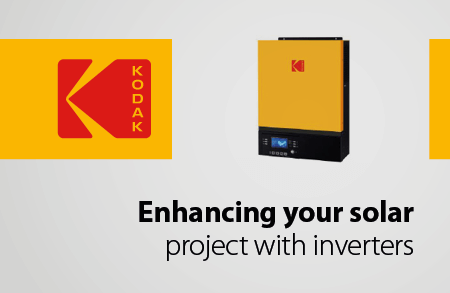It’s all very well having a fancy solar system atop your roof generating thousands of watts of clean energy. But do you understand how to truly optimise your system? Do you know which questions to ask to make the most of what your solar panels have to offer?
See below for a comprehensive run-down of inverters: the heart and hub of a photovoltaic (PV) system.
The heart of your solar project
A standard PV system is comprised of solar panels and an inverter. Depending on whether you are able to source power from the grid, a battery may be involved to store energy. While this is generally only required in off-grid locations, it is often beneficial to include a battery backup for more energy security during periods of load shedding. Keep an eye out on the website for more commentary on battery storage soon…
When the sunlight hits the panels, DC electricity is generated. However, the national grid and all electrical household appliances require AC power. The inverter’s primary function is converting DC into AC. An inverter also monitors the voltage, frequency and available energy from the panels, which allows you to gauge panel efficiency and energy production.
Another critical function of the inverter is drawing the maximum power from solar modules. This is known as Maximum Power Point Tracking, or MPPT, which is carried out with over 99% accuracy.
Most homes only need one inverter, yet some larger homes may require more. Luckily, most inverters are modular, meaning they can be paralleled to meet the demand of the PV system.
One size does not fit all!
Each solar installation project requires certain unique products to guarantee optimised operation in its specific circumstances. To focus on a single aspect of a complex system, there are three main types of inverters: grid-tied, hybrid and off-grid.
Grid-tied inverters
As the name suggests, grid-tied inverters allow energy generated by the solar panels to be exported to the national grid. Homes operating with a grid-tied inverter will, therefore, still be dependent on the grid for power. For this reason, locations with a less stable grid connection are not suited to this type of product.
The traditional grid-tied inverter is a string inverter. With a history of exceptional performance, these inverters are the most tested and reliable of their kind.
However, string inverters are not perfect. If one solar panel is operating at a lower efficiency owing to shading or damage, the overall output from the inverter may be reduced.
Discover the KODAK i Range for the perfect grid-tied system.
Off-grid inverters
Often referred to as ‘energy storage’ inverters, off-grid products have no connection to the grid and are, therefore, best suited to end-of-line, rural locations. Off-grid inverters require a battery (or multiple batteries) to operate.
Incorporating a battery backup or energy storage to your PV system adds another dimension to the inverter function. What’s more: some inverters work better with some panels than others, and it is vital to select the correct inverter size to match the panel for a system that performs optimally.
Any installer who is competent and proficient with KODAK Solar Products is extremely unlikely to come across any problems when installing your system as the compatibility between the products is simply unmatched. Such ease of installation is thanks to the meticulous product design which allows for ultimate system harmony. A project completed solely with KODAK Solar Products is remarkably more reliable, efficient (and more pleasing to look at!) than one comprised of multiple brands.
Explore the KODAK OG, OGX and OG Plus Range now to discover your perfect off-grid system.
Hybrid inverters
Hybrid inverters combine a solar and battery inverter in a single unit. This enables the DC power generated by the panels to be converted directly to AC or to be passed through to a battery for storage, before being converted to AC. Unlike standard DC to AC inverters, hybrid inverters can work both ways meaning the AC electricity can be taken from the grid or a generator and converted to DC. The energy is subsequently stored in the battery.
The KODAK H Range is versatile and can be used across a variety of applications. Find out more about what these brilliant products have to offer for your home or business!
So, what are you waiting for? Get involved with renewable energy and choose KODAK Solar Products for your complete PV system now. Find an installer near you today and discover how this solar equipment will enhance your world.




